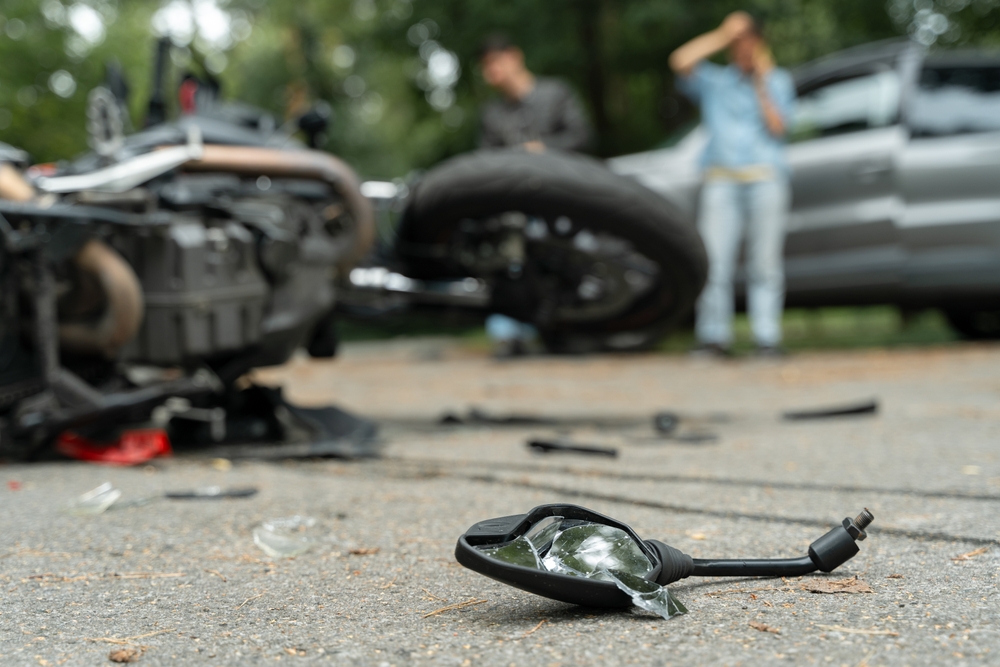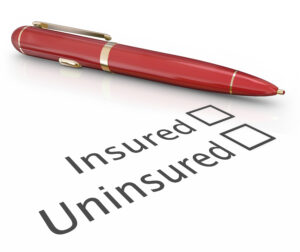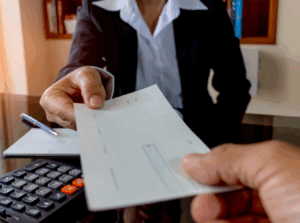After a motorcycle crash, the most effective way to document your injuries and damages is to create a comprehensive file containing the following:
- Every medical record
- Photographs and videos of your injuries and property damage
- A detailed personal journal of your daily symptoms
- A complete ledger of all financial losses, including lost wages and out-of-pocket expenses
A North Carolina motorcycle crash lawyer can help you identify exactly what to save, how to organize it, and how to present it so insurers take it seriously.
Because of the state’s unforgiving strict contributory negligence rule, any evidence suggesting you were even 1% at fault could prevent you from receiving any compensation for your injuries.
If an accident has injured you in North Carolina, your focus should be on healing, not on becoming a meticulous archivist overnight. The task of gathering, organizing, and presenting this evidence is not a burden you have to carry alone. Our team handles this for our clients every day.
You don’t have to figure this out on your own. Call Maginnis Howard at (919) 526-0450 for a no-cost discussion about your accident and how we can help.
On This Page: Documenting Injuries & Damages
Jump to any step in this North Carolina motorcycle-crash guide:
The Two Timelines That Define Your Claim: Medical and Financial
The Medical Timeline
Insurance companies scrutinize medical histories for any gaps in treatment. They may argue that a delay in seeking care or missing appointments means the injury was not severe or, worse, was caused by something entirely unrelated to the crash. Consistency is your counter-argument.
What You Should Do
As part of what to do after a motorcycle accident, attend every single scheduled appointment—with your primary doctor, specialists, physical therapists, and counselors. If you must reschedule, do so in advance and make a note of why. At each visit, be completely honest with your providers. Don’t downplay your pain or your limitations. If your shoulder aches when you reach for a high shelf, tell them. If you are having trouble sleeping because of anxiety from the crash, tell them. Every symptom you report becomes a part of your official medical record, creating a clear and consistent narrative of your condition.
The Financial Timeline: Tracking Every Dollar the Crash Cost You
When you think about damages, your mind likely goes to the twisted metal of your bike and the stack of hospital bills. But the financial impact of a serious motorcycle accident ripples much further. Damages are comprehensive, covering not just immediate costs but also future medical needs, income lost while you were unable to work, and even the loss of future earning capacity if your injuries prevent you from returning to your previous career.
What You Should Do
Start a simple system today. It doesn’t need to be elaborate. A dedicated folder or even a shoebox for physical receipts and a simple spreadsheet for tracking expenses is all you need. The key is to save everything. Every receipt, every bill, every pay stub, and every explanation of benefits from your health insurance. This diligence now prevents a frantic search for documents later and ensures no expense is forgotten.
Your Core Four: The Essential Documentation Toolkit
The following four categories of evidence are the cornerstones of a successful motorcycle accident claim in North Carolina.
The DMV-349 Crash Report
What It Is
The DMV-349 is the official report filed by law enforcement after a crash in North Carolina that involves a personal injury or property damage exceeding a certain amount. It is the first official record of the incident.
Its Role in Your Claim
Think of the police report (DMV-349) as the rough draft of the crash. It records the responding officer’s initial observations, a diagram of the scene, witness contact information, any citations issued, and the officer’s view of contributing factors. Crucially, the DMV-349 often identifies contributing factors and the causes of motorcycle collisions, and insurers typically rely on it as a first reference when assigning fault.
What You Should Do
You should obtain a copy of this report as soon as it becomes available. Read it carefully with your attorney. Check for factual errors in your personal information, the description of the events, and the diagram. The officer is human and may make mistakes, especially when dealing with the chaos of a crash scene.
How We Use It
We treat the crash report as a starting point, not the final word. Our attorneys analyze the report to understand the initial assessment of fault and identify key pieces of information, like witness identities. If we find errors or disagree with the officer’s conclusion, we know how to launch a deeper investigation. This may involve interviewing witnesses, securing surveillance footage from nearby businesses, or even hiring accident reconstruction professionals to uncover the complete truth of how the crash occurred.
Photographs and Videos
Why Pictures Are So Powerful
Visual evidence is direct, compelling, and difficult for an insurance company to dispute. It transforms abstract descriptions of “damage” and “injury” into concrete reality.
What to Document From Home
Even if you were unable to take photos at the scene, the documentation process is far from over. Here is how you can document injuries and damages after a motorcycle crash from home:
- Your Injuries, Over Time: Take clear, well-lit photos of your injuries every few days. Document the deep bruising as it changes color, the stitches from your surgery, the cast on your arm, and eventually, the scars that remain. This creates a visual timeline of your healing process—or lack thereof—which provides powerful proof of your suffering.
- Your Damaged Motorcycle and Gear: Before any repairs are made, thoroughly photograph your bike from every angle. Take wide shots to show the overall damage and close-ups of specific points of impact. Also, photograph your other damaged property. A cracked helmet, a torn jacket, or scuffed boots are evidence that demonstrates the violent forces involved in the crash.
Your Pain and Recovery Journal
Why Keep a Journal
Your medical records show the clinical diagnosis; your journal tells the human story of how that diagnosis rewrites every aspect of your life.
What to Record Daily
Be specific. Your goal is to paint a picture for someone who was not there. A few minutes each day is all it takes.
- Pain Levels: Use a simple 1-10 scale to rate your pain throughout the day. Note when it flares up—on cold mornings, after sitting for too long, or when trying to sleep.
- Specific Limitations: This is where detail matters most. Instead of writing “my shoulder hurt,” write “I couldn’t lift the gallon of milk from the fridge” or “The pain in my shoulder was so sharp I couldn’t put on my own shirt without help.”
- Emotional Impact: The trauma of a crash isn’t just physical. Document feelings of anxiety when you hear sirens, frustration over your limitations, or nights you spend staring at the ceiling, unable to sleep.
- Medication Effects: Keep a log of your prescriptions and any side effects you experience, such as drowsiness, nausea, or brain fog.
The Financial Story: The Paper Trail of Your Losses
Why Every Receipt Matters
Without it, you are simply asking to be reimbursed. With it, you are presenting a clear, itemized bill for the costs that were forced upon you by another’s negligence.
A Checklist of What to Keep:
- Medical and Therapy Bills: This includes every invoice from the hospital, your doctors, and physical therapists. Also, keep every co-pay receipt and every Explanation of Benefits (EOB) statement from your health insurer.
- Lost Wage Documentation: Obtain a letter from your employer on company letterhead that confirms your job title, your rate of pay, and the specific hours or days you missed due to your injuries. Keep all your pay stubs from before and after the accident to show the difference.
- Property Damage Estimates: Get multiple written estimates to repair or replace your motorcycle and any other damaged property like your helmet, phone, or clothing.
- Out-of-Pocket Expenses: This category is often overlooked. Keep receipts for everything you had to buy because of the crash. This includes prescriptions, crutches, a shower chair, parking fees at the hospital, and even the cost of hiring someone for lawn care or household chores you could no longer perform.
Common Missteps That Weaken a Claim
Don’t Delay Medical Treatment
As we mentioned above, gaps in care are red flags for insurance adjusters. Seeking prompt and consistent medical attention creates a clear, undeniable link between the crash and your injuries. If you feel pain, see a doctor. If a doctor refers you to a specialist, make the appointment.
Don’t Give a Recorded Statement Unprepared
The at-fault driver’s insurance company will likely call you and ask for a recorded statement. They may sound friendly and concerned, but their job is to protect their company’s financial interests. Anything you say can and will be used against you. It is always wise to consult with an attorney before ever agreeing to provide a recorded statement. Or better yet, once you have legal counsel, tell the insurance company to direct all calls to them.
Don’t Post About Your Case on Social Media
You must assume that the insurance company will see anything you post online. A photo of you smiling at a family barbecue or a comment about feeling “a little better today” can be taken out of context and used to argue that your injuries are not as severe or debilitating as you claim. The safest course of action is to refrain from posting about your accident, your recovery, or your activities until your case is resolved.
Don’t Miss Your Deadline
In all states, the law sets a strict time limit for filing a personal injury lawsuit. This is known as the statute of limitations. If you’re wondering how long do you have to file a lawsuit in North Carolina, most personal injury cases must be filed within three years from the date of the accident. If you miss this deadline, the court will almost certainly bar you from pursuing compensation forever, no matter how strong your case is.
Frequently Asked Questions About Documenting a Motorcycle Crash
It’s okay. While scene photos are helpful, the most important documentation starts now. You can still take detailed photographs of your injuries as they heal and the damage to your bike before it gets repaired. Your testimony, the police report, and witness statements help fill in the details of how the scene looked.
You should maintain the journal until your claim is fully resolved. Consistent entries over weeks and months provide a powerful, long-term record of your experience. This is especially important for demonstrating the nature of chronic pain or an injury that has long-lasting effects on your quality of life.
You should be extremely cautious about early settlement offers. These offers are typically made quickly, before the full extent of your injuries and financial losses are known. In many cases, it’s wise to refuse a settlement offer until your medical condition has stabilized and your damages are fully documented. Accepting an early offer means you forfeit any right to seek further compensation. It is always best to review any offer with an attorney before you sign anything.
As mentioned earlier, because of North Carolina’s strict contributory negligence law, a favorable police report is not a guarantee of payment. The insurance company will still search for any reason—no matter how small—to assign even 1% of the fault to you. They might claim you were speeding slightly, or that you could have taken evasive action. Your detailed documentation of your injuries, your damages, and the impact on your life is your best defense against this tactic.
Your Story, Your Proof, Your Recovery

You provide the story; we will build the fortress around it. Let our team at Maginnis Howard manage the complexities of gathering evidence and presenting your claim so you can dedicate your energy to what matters most: your recovery.
For a free and confidential consultation, call us today at (919) 526-0450.







